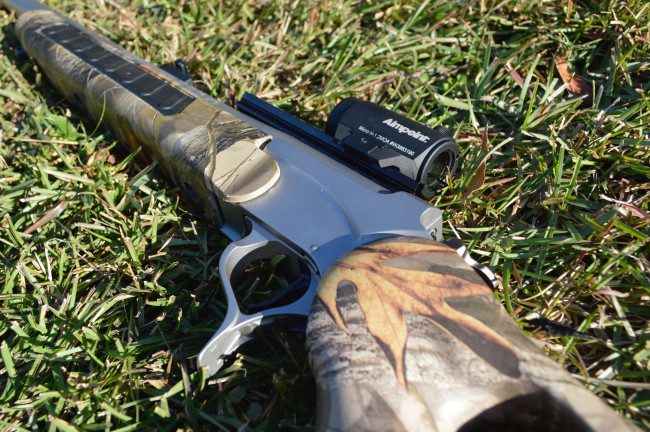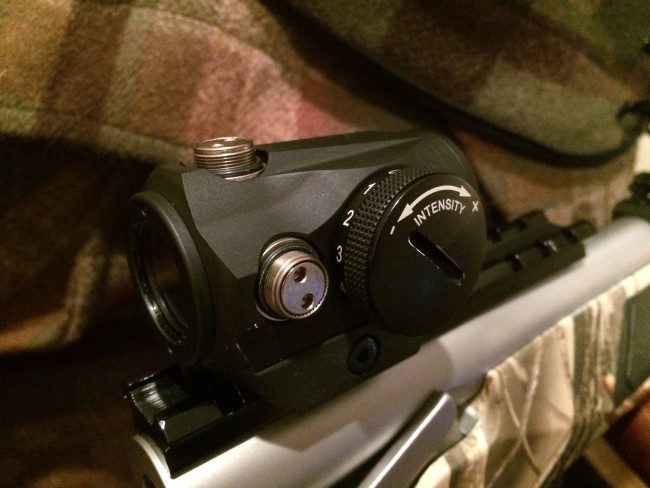I’ve been searching for the right optic for my Thompson/Center Encore virtually the entire length of my ownership of it. The rifle sports a 24-inch barrel, but without an action to house, its overall length is just 39 inches.
The Encore allows the shooter to swap barrels for different calibers, but I started out with an all-around .30-06 just in case I didn’t want to invest in extras. However, its design, coupled with the round’s recoil, made the gun a bit difficult to pair with a scope.
For one, its light weight and short length means the gun recoils harder than a typical bolt-action .30-06, with my eyebrow noticing the difference. Because of its lack of an action, the gun doesn’t leave much room for adjustability in the realm of eye relief. Also, the comb on its thumbhole stock sits a bit low, requiring me to raise my cheek off the stock a bit more than I’d like to when looking through a scope.
What to do?

Putting a red dot on a lightweight rifle eliminates the chance of “scope eye,” a constant threat prior to the Aimpoint’s installation.
My Back Forty has almost no shot opportunities over 100 yards, so when we ran a story recently about Aimpoint’s Micro H-1 red dot, I knew I had found the sighting solution I had been searching for. The company sent along a test model for me to try out, and so far the results have been all I could have hoped for and more.
For those who aren’t familiar with this model, the H-1 continues Aimpoint’s tradition of rugged reliability. It attaches directly to a Picatinny scope base, so there’s no need for scope rings which, even in the most low-profile option available, caused my previous scopes to ride higher on the gun than I would have liked.
That direct attachment to the base also solved two problems on the back end. With such a small body and only one attachment point on a Picatinny mount required, the Micro H-1 can be mounted as far forward or back on the base as I choose. No longer do I need to worry about milking a scope/base for all the eye relief possible, and the ever-present threat of “scope eye” is eliminated.
I tightened the sight onto the gun and headed to the range.
I started out at ten yards to get the red dot on paper, then moved downrange. The first official shot fell low and to the left, but we were on our way.
Aimpoint includes a special tool with its various sights. Rather than the typical ¼-click turrets of a traditional scope, the Micro H-1 features smaller dials for windage and elevation changes. I used the supplied tool to make the first series of adjustments, bringing the second shot upward and rightward. Finally, after adjusting the bullet impact a step too far to the 3 o’clock position, I dialed it back and had the red dot shooting perfectly.

The dot’s brightness can be adjusted by hand. The windage/elevation changes are made with a special tool included with the sight.
The sun wasn’t at its wintry peak yet, but the light pouring into the valley where I was shooting was distracting nonetheless. The H-1 comes with a 0-12 brightness adjustment, so I simply cranked it up to “8” to compensate. The dot was easily seen on the darker background of the target.
Now I was ready to go hunting. All that remained was to shoot something with this new lightweight, low-profile rifle setup.
The author is off for a deer/hog hunt this afternoon with coworkers Chuck Wechsler and Brian Raley. Check back with Sporting Classics Daily for an update and, hopefully, pics of their kills.

